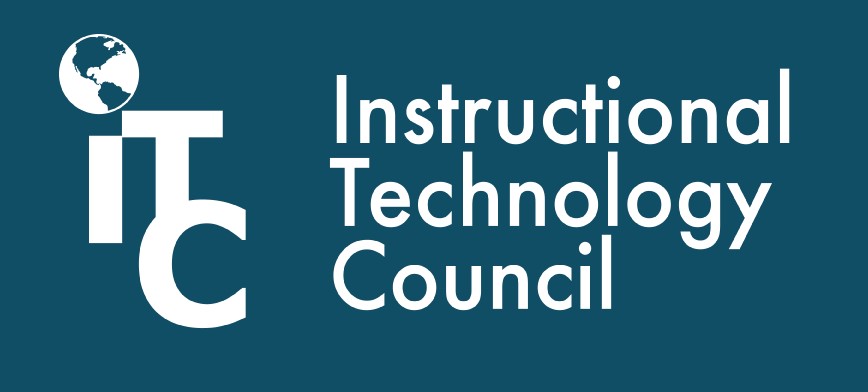Technology is redefining the landscape of higher education. For instance, the rise of online learning has greatly expanded access for community college students with changing work schedules and complex lives.

Online learning empowers our students to adapt to virtual communication and interaction as well as sharpening computer, device and app skills. Successful online learning showcases a well-trained and engaged faculty member who demonstrates the power of technology in learning and interaction. Online learning also preps students for remote work – a growing field in the economy.
Our institutions continue to serve a number of traditional students on campus as well. Regardless of the modality, the instructional environment must be designed to better prepare our students for 21st-century technology realities. Our faculty must be confident in instructional technology role models, communicating the relevance and importance of technology in student learning and engagement as well as the 21st-century needs of the 21st-century future of work.
This article is provided by the Instructional Technology Council, an affiliated council of the American Association of Community Colleges.
As colleges attempt to emerge from the pandemic, leaders need to recognize the criticality of seizing the moment to “technologize” all modalities of instruction. Key strategies to revolutionize the use of instructional technologies in the traditional classroom include:
- Assess your faculty’s “technology readiness.” When was the last time you surveyed your faculty regarding their interest in, their extent of training, and their level of satisfaction with your current classroom technology set-up and support? In addition, do you have mandatory initial training and refresher training for both full-time and part-time faculty? Do you have faculty buy-in for the current classroom technology set-up — and did you directly consult with faculty to ensure the arrangement was “instructor-friendly?”
It is also necessary to have a faculty-driven process for the exploration and adoption of classroom technologies – and a reasonable refresh program for the faculty office (ideally a laptop with docking station so faculty can take technology home for grading, online classes, etc). After all, many of our faculty have antiquated devices and inadequate wi-fi at home.
- Assess your students’ “technology readiness.” Students have long suffered from the “digital gap” – this became exceedingly obvious during the pandemic. Updated devices and adequate wi-fi are essential for online learning, but traditional students need the same level of digital access. As with faculty, surveying students on a regular basis is helpful and provides insights into the challenges they experience. Today’s community college has put literally every student service – and academic service – online. Applications, financial aid, catalogs, class schedules, registration, grades — you name it, it’s now online. During the pandemic, many campuses provided device checkout and wi-fi hotspots. This truly moved the needle in addressing the digital divide – and should be considered as an ongoing student support service to provide going forward.
- Engage your local community. To ensure you are effectively preparing your students to possess the key soft skills and hard skills needed in the local economy, you should reach out to members of your advisory boards/organizations and key stakeholders and prospective employers. If you are a transfer feeder campus to a local university, there are advantages in coordinating technology solutions, such as the same LMS or video conferencing software.
- Create a campus-wide infrastructure that supports the Internet Of Things. To further promote the importance of technology, many campuses have created a welcoming technology infrastructure for students, faculty and staff. Wi-fi should be available in every classroom as well as every public space. And access should begin in the parking lot. All benefit from readily available access. In addition, your institution’s IT should be encouraged to support the use of leading-edge technologies like AI, robotics and support for a larger variety of internet devices.
- Standardize your smart classrooms. Based on recent survey data from faculty and students, a faculty-driven dialogue should identify the key technologies to include in a standardized smart classroom. Be sure to include accessibility as a necessary element in setting up a standardized mix of instructional technologies and platform.
- Include needed instructional technologies in the program unit review process. Instructional technology needs should be integrated into your institution’s program unit review process. This will ensure that technology-related program needs are identified. It will help in terms of planning and ensuring adequate funding is available.
- Create effective and appropriate PD support. A two-tier approach is the best strategy – professional development (PD) training designed to train faculty on the operational aspects of the smart classroom instructional technologies and specific PD training focusing on how to use the instructional technologies to promote improved student engagement and learning.
- Reward faculty for adopting and successfully utilizing technologies in instruction. This can be accomplished in a variety of ways, such as stipends, awards or being recognized as part of the faculty member’s annual evaluation or technology exploration funding.
- Include instructional technologies in your institution’s strategic plan. It is important to institutionalize your commitment to instructional technologies – the strategic plan gives the commitment credibility and also ensures that funding will be sequestered in support of the effort.
- Funds to support and sustain the effort. Many campuses launch a major technology initiative or refresh as a “one-and-done” project. We all know technologies evolve as do the needs of our faculty and students. It is imperative to have a recurring funding solution – again, this is essential to the relevance of our curriculum, certificates and degrees as well as the future success of our students.
A structured, focused approach to instructional technologies in the traditional classroom will foster improved and empowered teaching, enhance student learning and engagement, and increase student preparation and success. These strategies ensure a comprehensive and vested set of solutions for faculty and students.





